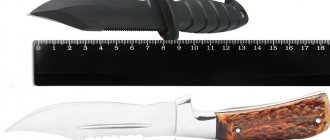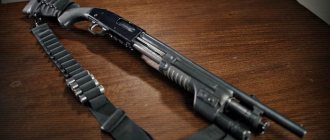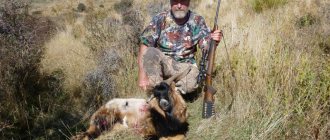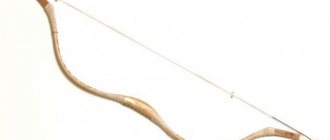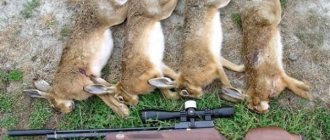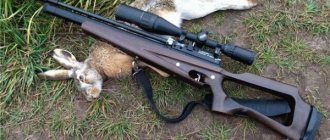The bow was successfully used in hunting tens of thousands of years ago and remains a relevant type of throwing weapon to this day. Of course, most modern hunters prefer the trigger to throwing arrows. After all, learning to shoot a bow is many times more difficult than mastering a firearm. Even a professional rifle hunter will take months of training before the first arrow hits the target. Of all the types of hunting weapons used today, the bow is one of the least productive. But this is where its appeal lies. Hunting with it requires special skill and excellent physical shape from its owner.
Hunting bows: types and features
Of the three types of bows, the classic (Olympic) ones are least suitable for hunting - they are intended for sports. The remaining two species are widely used as hunting species:
- Traditional. In essence, they are modern imitation of bows that were used by various peoples in certain periods of history. They can be made from wood or various plastics. The most common among them are: Simple ones, for example, longbow. This is a long (up to two meters) English bow with little or no bend. The material for it is wood (yew, ash, hazel).
- Recursive. With a shorter length, they have more power, achieved due to the strong bending of the shoulders. As a rule, they are made of modern materials and can consist of three parts: a handle and two shoulders.
Recurve bow.
If you want to do it well, do it yourself
Neanderthals, having only the “gifts of nature” at hand, somehow created weapons for hunting. A person of the 21st century has much more opportunities. What do you need to make a bow for hunting with your own hands? To make it, wood must have a number of useful properties: be uniform, durable, flexible and look attractive. To create a bow, you can use juniper, birch, oak, cedar, willow, rowan and elm. Be sure to remove the bark from the workpiece. The size of the bow is quite easy to determine; you need to measure the distance from the beginning of the thigh to the tip of the index finger of the shooter’s outstretched hand - this will be the length of the throwing weapon. Stepping back 1.3 cm from each edge of the shaft, cut out shallow grooves for the bowstring. After that, the onion needs to be grated with animal fat and dried. It is recommended to make the bowstring from rawhide or silk threads. Those who like experimenting should try stretching a thin rope or making a “braid” from Chinese nylon threads for fishing.
Dimensions and specifications
A bow, as a weapon, depends to the greatest extent on the anthropometric data of the shooter and his physical strength.
- If the owner's height is from 170 cm to 190 cm, the optimal length of a classic bow should be from 66 to 72 inches (approximately 167-182 cm), with a string tension of 30 pounds (13.5 kgf).
- Modern longbows correspond to approximately the same parameters . Their average length is about 150-160 cm. The tension force of the bowstring can be adjusted within 20-60 kgf and gives the arrow a maximum take-off speed of up to 80 m/s.
- Recursive ones are less long . With an arrow speed and string tension comparable to a longbow, their length is usually within the range of 120-130 cm.
- An important feature of compound bows is the force release effect at the maximum draw point. Moreover, some designs with a tension force of 30 kgf require only 4 kg of force to hold the bowstring.
- This is the most compact variety - the length between the axes is, on average, a little more than 80 cm.
- Boom speed over 90 m/s with a draw force of 60 pounds (27 kgf).
Hunting with a compound bow.
Legal standards
There are many disputes on the Internet between owners and potential buyers regarding the legality of purchasing, carrying and using throwing weapons, which include bows and crossbows. Each state in the post-Soviet space has its own legal framework. For Russia, for example, there is a Federal Law “On Weapons” 150-F3. If we put together articles 3, 6 and 13, we can conclude that throwing weapons in Russia are allowed only to participants in sports sections and for carrying out scientific research and preventive work related to the immobilization and injection of animal objects. Bowhunting can freely hide behind this law. There is also GOST R 51715-2001, which allows the presence of throwing weapons, the tension force of which is no more than 12 kg.
Advantages and disadvantages
It is believed that a bowstring tension of 30 pounds is sufficient for hunting small game, about 40 pounds for medium game, and more than 50 pounds for large game. All types of hunting bows provide such power and each of them has its own advantages and disadvantages:
- Traditional models of any design are distinguished by their simplicity and low weight in the range of 1-1.5 kg.
- Shooting from them requires the most developed physical strength skills, and the lack of the ability to use sighting devices reduces the accuracy of the shot.
- As a rule, they are not dismountable, which makes transportation difficult.
- The disadvantages of block models are their overall complexity, high cost and significant weight, often reaching 3 kg.
- However, they are distinguished by the least demands on the shooter’s physical strength, relatively small dimensions and provide high accuracy, speed and firing range.
Hunting with a recurve bow.
An interesting loophole for novice hunters
Recently, the “Russian Bow Hunting Club” appeared in Russia. A rather interesting organization in a country where bow hunting is prohibited, it immediately attracted the attention of both hunters and animal lovers, who “put a spoke in the wheels” of club members who want to legalize bow hunting in the vastness of Russia. This club is attractive because it conducts seminars on training in shooting with throwing weapons, and based on the results of the exam, it can award a license that allows you to practice bow hunting in countries that do not have a ban. And there are about thirty such countries in the world - there is plenty of room to roam! For example, in nearby Belarus, bow hunting is allowed. You can also go to Bulgaria or Africa to get trophies without any problems; the club is ready to help with organizing the trip. And the license from this club allows hunting on the territory of Russia in special enclosures registered in the unified state register. Over the past year, about a hundred such enclosures have been registered across Russia; their area is 100-1000 hectares and includes forest lands. There's a lot to think about.
How to choose a bow
Archery hunting is the most difficult and expensive type of hunting and choosing a weapon for it is a responsible process in which many factors must be taken into account:
- Legality . Purchasing a bow with a draw weight of less than 27 kgf does not require any registration. More powerful weapons are subject to registration with the licensing and permitting system, and purchase requires a valid permit for firearms. The hunting itself is subject to the same requirements as for rifle hunting: compliance with deadlines, availability of a hunting license and voucher.
- Without stable shooting skills, a bow is useless. Completion of a training course will be required .
- The choice is made personally, taking into account the anthropometric data of the owner and his physical strength.
- Once purchased, the bow needs tuning. The block one is the easiest to configure.
- The arrow's flight range reaches several hundred meters, but during hunting, the distance to effectively hit a target is 20-40 meters. A wounded animal is dangerous, so the power of the bow must provide the necessary killing power. In addition, such a wounded animal is a violation of hunting ethics.
- The bow must be fast enough, since if it misses, the animal can escape from the second shot. Traditional models allow a shot with the bowstring not fully tensioned, and this makes them faster than a block shot, but the power of the shot may be insufficient. Compounds provide stable accuracy, power and speed of fire.
- It is advisable to choose models with higher arrow flight speed. In this case, the trajectory will be flatter and the shot will be more accurate. High velocity bows provide heavy hunting arrows with plenty of penetration.
Choosing a bow: what criteria to present. - Convenience. Traditional bows are longer, which creates inconvenience when moving, but this can be neglected when hunting from ambush. Block ones are more compact and therefore convenient for walking hunting, but are relatively heavy.
- Hunting at short distances requires the use of camouflage paint on the bow and the absence of shiny parts in its design.
- equipment should provide not only comfort when carrying a weapon, but also quick reloading, as well as mandatory protection of the bow from adverse weather conditions.
Arrow selection
No matter how powerful and accurate a bow is, a low-quality arrow or one unsuitable for hunting can leave the hunter without prey. Despite the lack of uniform requirements for arrows, there are fairly general recommendations for their selection:
- Use only hunting arrows, not sporting arrows.
Bow and arrows. - Wooden arrows do not provide the necessary accuracy and are not durable.
- Aluminum arrows are the preferred choice due to their good weight to strength ratio.
- Carbon arrows, although high in strength and good flight characteristics, may have insufficient weight.
- The plumage is made from natural (feather) or artificial (plastic) materials. The latter are less dependent on weather conditions.
- The mass of the arrow is determined by the tension force of the bowstring: per 1 kg of tension there should be 0.8-1.1 g of arrow mass. Thus, for a bow with a draw force of 27 kgf, the arrow mass should be 23-30 g.
Manhunt
First things first when it comes to using a bow while hunting, and as with any hunt, the most important aspect is that there is still a person in the game.
Therefore, you should always focus on implementing these points.
- practice . Practice, practice, practice, and then practice a little more. You should feel comfortable and safe when using a bow, as not only do you not want animals to suffer unnecessarily, but you will usually only get shot. If you spend most of your day keeping an eye on your prey, stalking it, watching it, hiding and silently, you won't want to go home empty-handed.
- dam . As in “Know your prey.” Each animal has its own "sweet spot" from which one shot will kill it instantly. Not only that, but you also want to make sure that your arrow has enough strength to get the job done, and this will depend not only on the arrow but also on the strength of the bow, so always use the right tools even if you don't get them. find the animal the first time and kill it as quickly and humanely as possible the second time.
Best models
The popularity of archery as a form of leisure or hunting is quite high and the market is saturated with models of different price categories and types.
Among the recursive ones the leaders are:
- MARTIN FIELDBOW HUNTER.
Samick Deer Master.
A versatile bow with an adjustable power range of 45-60 pounds and a 62-inch length. A special feature of the model is that it has options for both right-handers and left-handers. - HOYT GAMEMASTER II . With a draw weight of 50 pounds and a length of 62 inches, it imparts arrow speeds of up to 80 m/s, making it highly suitable for large game hunting.
- Samick Deer Master. A lightweight 30 pound bow designed for hunting small to medium game. Length - 60 inches.
Popular Compound Bow Models:
- PSE DNA .
It is considered one of the fastest-firing. Bear Archery Authority. Lightweight (1.7 kg) compound with a power of 27 kgf and a boom speed of 105.2 m/s. - Bear Archery Authority. It is characterized by low shot noise. Power 27 kgf, boom speed 97 m/s.
- Hoyt Defiant. Completely made of light alloys. It has a small weight of 1.6 kg. Tension force 27 kgf. The boom speed is 101 m/s.
Alternative option
There is another way to make a bow for hunting. You can order the production of a bow from a real master in the production of throwing weapons. Until now, in many countries in Asia, Southeast Africa, South America and the Russian Far East, people actively use bows and crossbows for hunting. Naturally, they do not buy weapons in a store, but make them with their own hands using ancient family technologies that are passed on from one generation to another. True traditional bows are every bit as good as the more expensive and advanced compound designs. And their reliability and ease of use will provide the hunter with fresh meat in the house for a long time. As an alternative, you can search for the desired weapon at foreign auctions on the Internet. Sometimes you come across worthy things.



